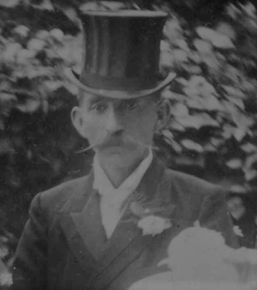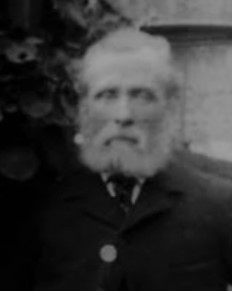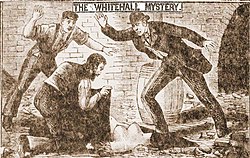
Annie Chapman was the second canonical victim of the notorious unidentified serial killer Jack the Ripper, who killed and mutilated a minimum of five women in the Whitechapel and Spitalfields districts of London from late August to early November 1888.

Mary Ann Nichols, known as Polly Nichols, was the first canonical victim of the unidentified serial killer known as Jack the Ripper, who is believed to have murdered and mutilated at least five women in and around the Whitechapel district of London from late August to early November 1888.

A series of murders that took place in the East End of London from August to November 1888 was blamed on an unidentified assailant who was nicknamed Jack the Ripper. Since that time, the identity of the killer or killers has been widely debated, and over 100 suspects have been named. Though many theories have been advanced, experts find none widely persuasive, and some are hardly taken seriously at all. Due to the extensive time interval since the murders, the killer will likely never be identified despite ongoing speculation as to his identity.
The "From Hell" letter was a letter sent alongside half of a preserved human kidney to George Lusk, the chairman of the Whitechapel Vigilance Committee, in October 1888. The author of this letter claimed to be the unidentified serial killer known as Jack the Ripper, who had murdered and mutilated at least four women in the Whitechapel and Spitalfields districts of London in the two months prior to Lusk receiving this letter, and whose vigilance committee Lusk led in civilian efforts to assist police in efforts to identify and apprehend the perpetrator.

Mary Jane Kelly, also known as Marie Jeanette Kelly, Fair Emma, Ginger, Dark Mary and Black Mary, is widely believed by scholars to have been the final victim of the notorious unidentified serial killer Jack the Ripper, who murdered at least five women in the Whitechapel and Spitalfields districts of London from late August to early November 1888. At the time of Kelly's death, she was approximately 25 years old, working as a prostitute and living in relative poverty.

Elizabeth "Long Liz" Stride is believed to have been the third victim of the unidentified serial killer known as Jack the Ripper, who killed and mutilated at least five women in the Whitechapel and Spitalfields districts of London from late August to early November 1888.

Catherine Eddowes was the fourth of the canonical five victims of the notorious unidentified serial killer known as Jack the Ripper, who is believed to have killed and mutilated a minimum of five women in the Whitechapel and Spitalfields districts of London from late August to early November 1888.

Martha Tabram was an English woman killed in a spate of violent murders in and around the Whitechapel district of East London between 1888 and 1891. She may have been the first victim of the unidentified serial killer Jack the Ripper.
Aaron Kosminski was a Polish barber, hairdresser, and suspect in the Jack the Ripper case.

Montague John Druitt was an English barrister and educator who is known for being a suspect in the Jack the Ripper murders of 1888.

Jack the Ripper was an unidentified serial killer active in and around the impoverished Whitechapel district of London, England, in 1888. In both criminal case files and the contemporaneous journalistic accounts, the killer was also called the Whitechapel Murderer and Leather Apron.

The Whitechapel murders were committed in or near the impoverished Whitechapel district in the East End of London between 3 April 1888 and 13 February 1891. At various points some or all of these eleven unsolved murders of women have been ascribed to the notorious unidentified serial killer known as Jack the Ripper.

Joseph Lawende was a Polish-born British cigarette salesman who is believed to have witnessed serial killer Jack the Ripper in the company of his fourth victim, Catherine Eddowes, approximately nine minutes before the discovery of her body on 30 September 1888.

Wynne Edwin Baxter FRMS FGS was an English lawyer, translator, antiquarian and botanist, but is best known as the coroner who conducted the inquests on most of the victims of the Whitechapel Murders of 1888 to 1891 including three of the victims of Jack the Ripper in 1888, as well as on Joseph Merrick, the "Elephant Man".

Thomas Bond FRCS, MB BS (London), was an English surgeon considered by some to be the first offender profiler, and best known for his association with the notorious Jack the Ripper murders of 1888.
Keith Skinner is a British actor, crime historian and author.
The Thames Torso Murders, often called the Thames Mysteries or the Embankment Murders, were a sequence of unsolved murders of women occurring in London, England from 1887 to 1889. The series included four incidents which were filed as belonging to the same series. None of the cases were solved, and only one of the four victims was identified. In addition, other murders of a similar kind, taking place between 1873 and 1902, have also been associated with the same murder series.
James Thomas Sadler, also named Saddler in some sources, was an English merchant sailor who worked as both a machinist and stoker. In 1891, the then-53-year-old was accused of killing prostitute Frances Coles. Sadler was placed under arrest, and a mob almost lynched him at the exit of a police station. Eventually, he was dismissed by police for having a solid alibi, and obtained compensation from a newspaper that had branded him as Jack the Ripper.

Charles Allen Lechmere, also known as Charles Allen Cross, was an English delivery driver. A native of East London, Lechmere reportedly worked for the Pickfords company for more than 20 years, during which time he was primarily known as Charles Cross. On 31 August 1888, Lechmere reported the body of Mary Ann Nichols, the first of Jack the Ripper's five canonical victims, while on his way to work. Although long regarded as merely a witness to the crime scene, Lechmere has since been named as a potential Jack the Ripper suspect by contemporary true crime writers.

















